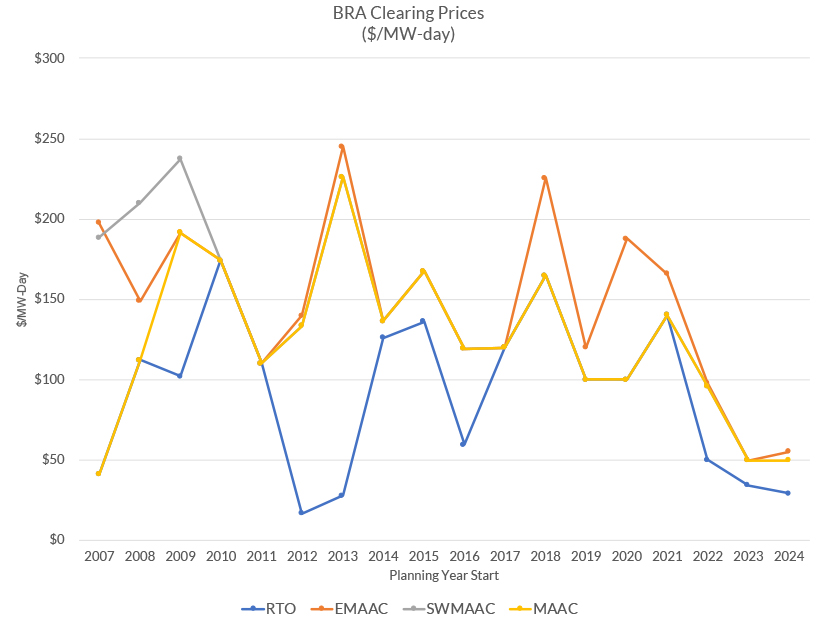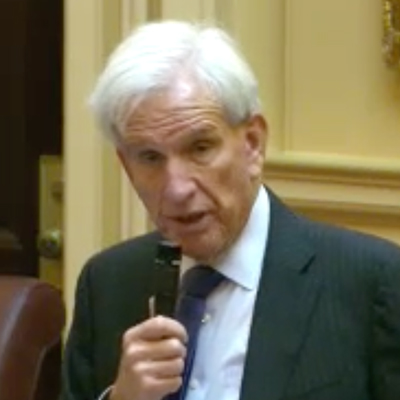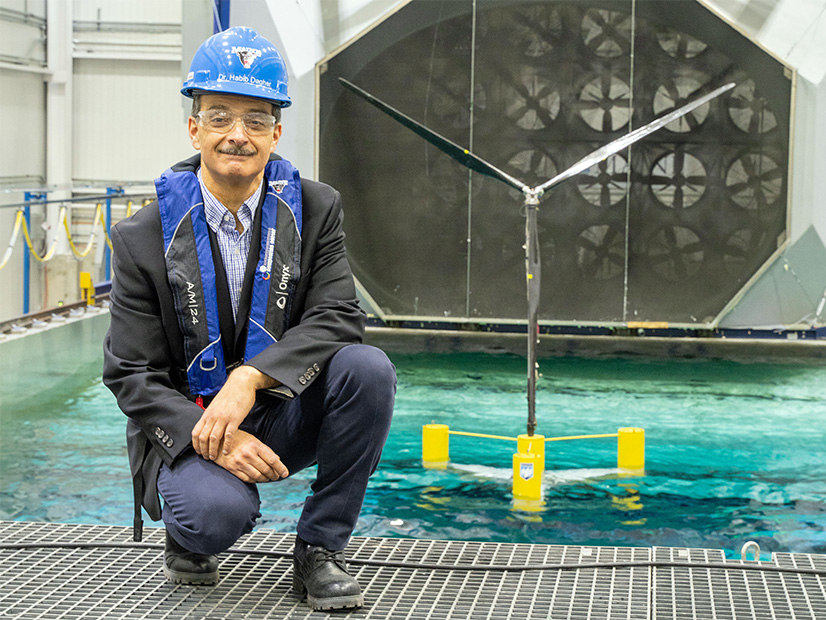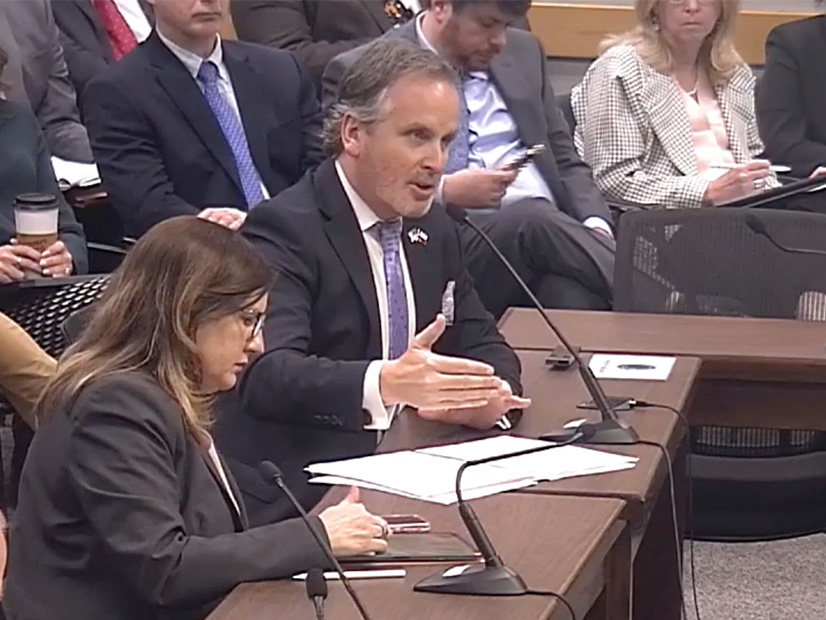AUSTIN, Texas — Infocast’s 11th ERCOT Market Summit last week attracted about 600 attendees, primarily financiers and developers, eager to gain insight into the Texas grid operator’s new products and services addressing reliability, the state’s increasing load, and emerging policy and market challenges.
Given the potential changes to how providing power is rewarded, much of the discussion centered on the performance credit mechanism (PCM), the Texas Public Utility Commission’s preferred market redesign for ERCOT.
The PCM would reward generators in ERCOT’s energy-only market with credits based on their performance during a determined number of scarcity hours. Those credits must either be bought by load-serving entities or exchanged between them and generators in a voluntary forward market. (See Texas PUC Submits Reliability Plan to Legislature.)
Most speakers expressed opposition to the construct. Others offered support.
Asked how he could be sure the untested PCM would incent gas-fired generation, as favored by the state’s lawmakers and regulators, ERCOT CEO Pablo Vegas said the market mechanism is really nothing new.
“The PCM is actually a fairly well understood set of tools that the ERCOT market and its participants have been using in different forms for many, many years,” he said, noting it can be broken down into three main components: a forward auction, a supply-and-demand curve and a backward settlement for performance during the performance period.
“We’re taking those three components and we’re putting that together. So, I think the argument that it’s too novel is really not well founded,” Vegas said. “Texas has created some of the most novel concepts in the history of energy markets. The energy-only market created back in 2000 was the first of its kind and continues to be one of the most innovative markets in the world. We have experience doing things that are completely new and different and seeing success from it.
“I think it will be well understood. I think it will incentivize generation because markets work. We have the history of knowing the markets work, when there are significant distortions that change the way those markets work, and you see issues on the market. And that’s what we’re dealing with today. Markets will work if they’re designed in a way that can be understandable.”
Campbell Faulkner, a senior vice president with over-the-counter energy commodity broker OTC Global Holdings, was asked whether the PCM market would turn into a capacity market, as some fear. He said the construct is unlikely to result in an optimum solution for everyone.
“You’re trying to marshal the quasi-governmental aspects of ERCOT with the state legislature and the end-use constituents. … It’s going to end up being filtered through the state representatives … to determine are you willing to pay more for a liability or a preference to paying less but having more frequent outages,” he said.
“Capacity markets, in general, are complicated. You’re essentially trying to ensure that you not only have fleet reliability, but you have dispatch reliability and often you have congestion reliability. The ERCOT system worked exceptionally well for most of its design life, largely because it did have a relatively high price cap. There are economic arguments that say there shouldn’t be a price cap at all to generate every single marginal megawatt. These things are all going to basically have to be relitigated.”
“If you look at other capacity market constructs … there are price mechanisms and price structures that help support debt financing for projects,” EIG Partners’ Shalin Parikh said. “When you look at the way the PCM has been proposed, I don’t foresee it being a structure that will support or that lenders will underwrite to.”
Parikh said capacity markets are “largely based on creating availability, covering your fixed costs and potentially servicing some of that financing that you have raised to build those projects.”
“From that standpoint, I would say ERCOT likely will not be viewed as a capacity market construct, even if that is the intention of the mechanism,” he said.
Katie Coleman, an attorney who represents industrial consumers, was asked what reliability problem the PCM is trying to solve as part of the PUC’s Phase II market redesign. Phase I included weatherization requirements, revisions to the operating reserve demand curve and additional ancillary services in the aftermath of the February 2021 winter storm.
“I view Phase II as an effort to try to exert more control over what investment decisions are made in a deregulated market,” she said. “This is at least the fourth time that we’ve been through this argument about whether we should impose a capacity construct on the market. I think when you are sitting in the seat as a regulator or a legislator who has responsibility for reliability, it is very attractive to try to impact market outcomes through administrative measures.
“We do believe that there are mounting operational issues in ERCOT that need to be addressed in a more tailored way,” Coleman added. “And my clients believe that it’s worth spending more money to do that, but they do believe that additional services and tools are needed to manage particularly renewable variability.”
Shell Energy North America’s Resmi Surendran said U.S. Energy Information Administration data on resource retirements and investment shows ERCOT’s energy-only market is sending the right signals to the financial community. She said the capacity markets in PJM and MISO have resulted in a combined 140 GW of investment against 77 GW of retirements, according to the EIA data.
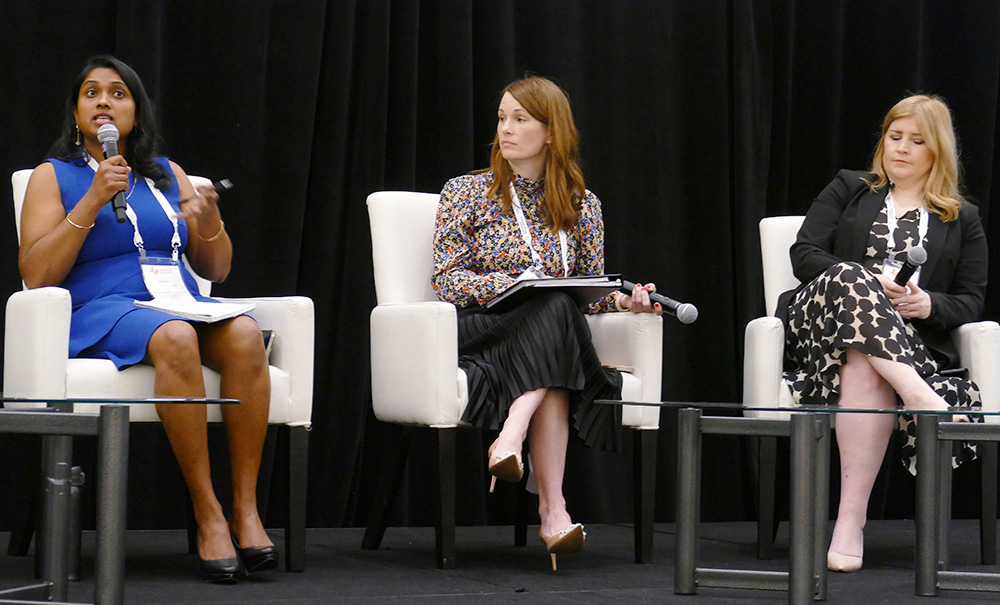
“ERCOT has had 48 GW of investment in thermal resources in the last 20 years, but only 18 GW of retirement. That means ERCOT has load growth that is incentivizing generation,” she said. “The energy market is sending the signal that is needed for investment.”
Emily Jolly, associate general counsel for the Lower Colorado River Authority, listened to her fellow panelists and said she was noting the issues they raised and thinking about how to respond to them.
“I think the problems that we’re looking to solve in the market are, we don’t need payday loans. We don’t have a problem getting financing for the additional capital construction,” she said. “I think it’s important for us to look at the revenues that dispatchable generators are actually receiving in the ancillary services markets today. We’ve seen a lot of short-duration battery storage participating in those markets and getting increasing shares of those revenues. Those are not the kinds of resources that are going to get us through another multihour, multiday event, but I think that’s a tradeoff that we all need to be aware of.”
Study: PCM a ‘Major’ Market Overhaul
Aurora Energy Research’s Oliver Kerr shared his firm’s analysis of the PCM, saying it represents a “pretty major overhaul of the market” and that all its versions lead to a “pretty substantial shift away from scarcity value towards PCM credit.”
“I don’t think it’s an exaggeration to say that the PCM actually represents a pretty fundamental paradigm shift in how assets are remunerated in Texas,” he said. “You’re really seeing a pretty key shift away from revenues driven by energy scarcity value towards reliance on capacity payments.”
Aurora studied an illustrative PCM implemented in 2027, with credits paid for the 20 highest hours of peak net load. The firm modeled four scenarios based on renewables eligibility and the top 20 reliability hours determined seasonally versus annually. All the scenarios led to an increase in capacity, with more added when renewables were not eligible, Kerr said.
The researchers determined that excluding renewables leads to more new build capacity because fewer credits are generated. That increases the credits’ price and leads to the buildout of more peakers and batteries. Aurora found the PCM does benefit solar in all scenarios in that it sees increased capacity relative to the base case because of higher battery buildout; batteries increase solar gross margins by charging during solar production.
“All scenarios that we modeled led to an increase, a significant increase, actually, in dispatchable generation or capacity across the board,” Kerr said. “Fewer renewables means fewer credits are generated, which means that the price per credit is high as it grows to other technologies.”
Vegas Says ERCOT at Crossroads
Juliana Sersen, a 10-year veteran of ERCOT’s legal department and now a partner in the Baker Botts law firm, introduced CEO Vegas’ keynote speech by telling the audience, “I can tell you what ERCOT used to be like, but here’s someone who knows what it will be like in the future.”
“We find ourselves today at a crossroads. Facing us are a series of choices that could lead us into a prolonged season of stagnation and frustration, or continue ERCOT on a trajectory of innovation, competition and economic growth,” Vegas said in his opening comments. “As [Texas] legislators revisit the laws that they passed in 2021 and they debate the nature of their ongoing implementation going forward, I can’t think of a more important conversation or more significant way for us to spend our time today.”
Labeling ERCOT as “the nation’s only independent state grid,” he said the deregulated market’s track record is “unmatched” and its competitive edge and opportunity is “enormous.”
Vegas referred to the “false binary of renewables-only strategies” as he discussed the need for more dispatchable generation. ERCOT has seen more than 27 GW of thermal generation retire since 2000 and added more than 52 GW of renewable generation during that same time. The grid operator’s peak load exceeded 80 GW last year, more than a 5-GW jump in three years, he said.
“Are we doing what it takes to add the generation that we need before Mother Nature decides to test us again?” Vegas asked.
He assured his listeners that renewable energy remains a part of the mix as he answered a question about whether they should be excluded from the PCM.
“I think that we need to have performance criteria that creates a very dependable, responsive set of generating assets that can deliver earnings in that market,” Vegas said. PCM “is a separate market. … The energy-only market continues to operate the way it does today. All the benefits that renewables get today under the current energy on the market are going to continue to exist, so I think renewables will continue to have all the incentives that they have had historically to continue to develop.”
Political Influence Concerns Developers
A panel on ERCOT’s “new normal” in a future of volatile gas prices, increasing renewable penetration and exponential load growth debated the heavy hand of politicians following the February 2021 winter storm. The PUC commissioners at the time are all gone, replaced by Gov. Greg Abbott appointees, and the ERCOT board has replaced market representation with independent directors selected by a political committee.
The current market redesign work has only heightened fears of renewable developers that wind and solar will face stiff headwinds.
“I’ve been working in solar and ERCOT for a number of years now, and it definitely feels like it’s changing,” Lightsource BP’s Helen Brauner said. “The demand thankfully is greater than it’s ever been, so that’s a very positive trend and change. It’s a great market for solar, but it kind of feels like there’s additional pressures afoot.”
Brauner said that while ERCOT is on track to add 8 GW of solar-powered capacity this year and Texas is expected to overtake California as the No. 1 state for solar power, she is noticing political pushback against renewable energy. Referring to a recent bill filed at the legislature “with some really egregious time terms,” she said, “That just didn’t happen before, so I’m a little nervous about seeing things like that.”
Julia Harvey, vice president of government relations and regulatory affairs for Texas Electric Cooperatives, agreed with Brauner.
“I’m not the first to observe this, but maybe the trend towards politicization of the stakeholder process has always somewhat been the case because of the unique nature of electricity. You can’t just design a market purely based on economic ideals,” Harvey said. “There’s always other motivations, but since the [2021] winter storm, I think there’s been a more pronounced movement away from this kind of stakeholder-driven, more sort of technocratic policymaking to something that’s more top down, and I think that can create some sense of instability for market participants.”
“I feel like things are getting kind of political, and that concerns me,” Brauner added. “All these different generation resources have different pros and cons to them, and I just don’t want ERCOT or the politicians to pick and choose generation. Just lay out what we need, and let the resources figure out what they need to make money. That’s how it’s always been. … I just hope that continues.”
